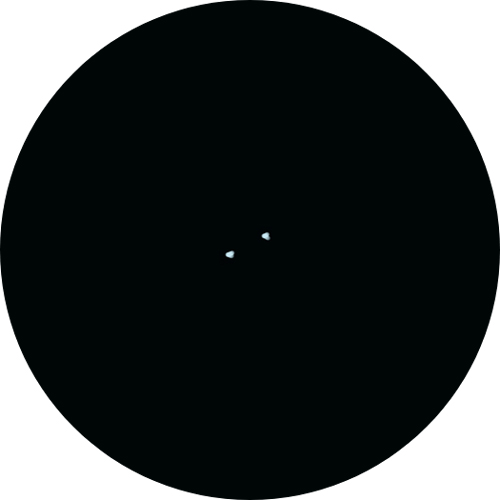Springtime galaxy hunting in Ursa Major is an awarding experience. Observers have their pick of Messier objects from the awe-inducing Whirlpool Galaxy (Messier 51) to the bright Cigar Galaxy (Messier 82). Then, scrolling through these notable Messier objects, one lands upon Messier 40.
Aiming the scope at M40 uncovers a simple pair of stars—no nebula, galaxies, or other objects that we associate with Messier. So what’s up with that?
Well, in 1764, Charles Messier was looking for a nebula recorded by astronomer Johannes Hevelius a hundred years before in 1660. Using the coordinates, Messier didn’t see a thing other than a faint pair of stars writing in his journal: “There is reason to presume that Hevelius mistook these two stars for a nebula.”2
What’s interesting is today we know Messier 40 is not even a true binary star system; the two stars are simply an optical double star.
Writer Ethan Siegel does a nice job explaining Messier’s mistake here. Siegel points out that there were “many objects that were in previous catalogues that turned out to be spurious, and Messier chose not to include.” But in the case of M40, he still included it though there is nothing notable at that location in the sky.
So the next time you’re star hopping through Ursa Major, stop by Messier 40, and ponder why Messier decided to keep these pair of stars in.
My Observations
Date: April 22, 2021
Time: 10:53 p.m.
Location: Seattle, Washington
Scope: Meade 8″ ACF
Eyepiece: 16mm
Temp: 55F
Seeing: Good
Transparency: Average

Key Stats
| When to view | Spring | R.A. (2021) | 01h 33m 48s[ |
| Constellation | Ursa Major | Dec (2021) | +87° 43′ 49″ |
| Visual Magnitude | +8.45 | Distance | 295 ly |
| Absolute Magnitude | +3.67 | Age | ? |
| Apparent Size | 1.7 arcmin | Milky Way Locations | Orion Spur |
| Diameter | .2 ly | My Viewing Grade | B |
Historical Observations
October 24-25, 1764 by Charles Messier
“The same night on October 24-25, [1764], I searched for the nebula above the tail of the Great Bear [Ursa Major], which is indicated in the book Figure of the Stars, second edition: it should have, in 1660, the right ascension 183d 32′ 41″, & the northern declination 60d 20′ 33″. I have found, by means of this position, two stars very near to each other & of equal brightness, about the 9th magnitude, placed at the beginning of the tail of Ursa Major: one has difficulty to distinguish them with an ordinary (nonachromatic) refractor of 6 feet [FL]. Here are their position: right ascension, 182 deg 45′ 30″, & 59 deg 23′ 50″ northern declination. There is reason to presume that Hevelius mistook these two stars for a nebula.”
Sources and Notes
Photo of Messier 40 Banner: NOAO / AURA / NSF.
1Historical observation from messier.seds.org.
2https://www.messier.seds.org/Mdes/dm040.html
Sketch by Wayne McGraw
AKA: Winnecke 4, WNC 4
